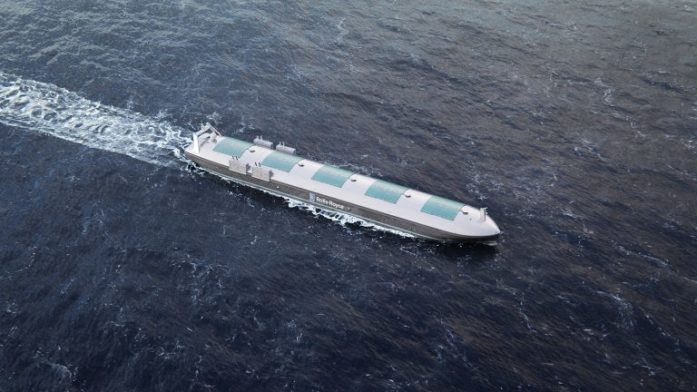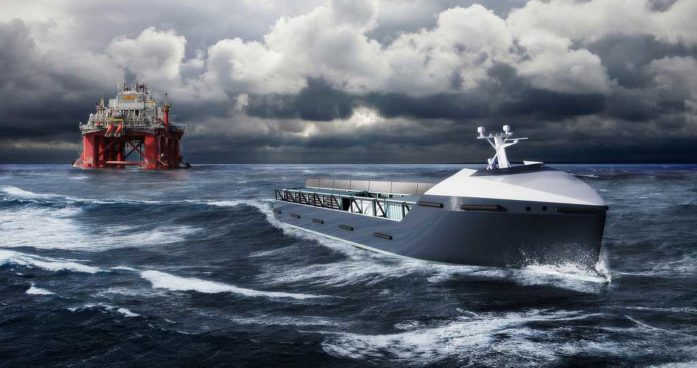It seems that autonomous ships are not just science fiction anymore. I don’t know how such a technology is viable in the following twenty years or so, but I can be sure that it’s not just about safety. The Machine executable collision regulations for Marine Autonomous systems, on short MAXCMAS, is a project scheduled to be completed this year, 2017. It is being undertaken by Rolls Royce as project lead, Lloyd’s Register (LR), Atlas Elektronik UK, Queen’s University Belfast and Southampton Solent University’s Warsash Maritime Academy. The project is valued at £1.27 million ($1.55 million) and it aims to investigate, develop and implement real-time collision avoidance algorithms for autonomous maritime vessels.

Rolls Royce autonomous ship prototype
[source: worldmaritimenews.com]
Autonomous Ships Rolls Royce Prototypes
Rolls-Royce Marine has already completed the first phase of something called Advanced Autonomous Waterborne Applications Initiative to make autonomous ships and shipping a reality. Of course they are not alone, they did it in collaboration with Finnish universities and global maritime companies. Oskar Levander is vice president at Rolls Royce Marine Innovation Division.
He says that the technology for remotely-operated and autonomous ships creation already exists. Other more sensitive factors are still to be considered. They want to combine the crew elimination with the “safety at sea”, including terrorist attacks or pirates on board, cost effective.
I am sorry to say that after wanting to regulate the seas more than it already was regulated, certain authorities want complete control of everything in transit. It seems that only some super high tech yachts will be allowed in the future to cruise the world’s oceans, and the noble guild of seamanship will be eradicated. The global maritime companies want to have the fresh start in this. The project masters want even to change IMO rules for their goal. The claim is that significantly more standardized and reliable ships will be essential if they are to operate at sea for several weeks without engineers aboard.

Autonomous vessel from Rolls Royce
They need support, first from ship owners, to agree to change all their ships, from seafarers, to agree to become unemployed, from offshore cargo operators and from public opinion. Mr. Levander is sure that their future systems is unhackable and cybersecured. I think this affirmation is preposterous. I conclude his euphoria with what he said about a pirate attack, and how he sees the future:
Crewless ships could be built so they are very difficult to board. Even if pirates got aboard, access to the controls could be made unavailable. Indeed, computers could immobilize the ship, or have it steam in a circle, making it relatively easy for naval authorities to reach it.
Recapture would also be easier, because there would be no crew held hostage. And without a captured crew to ransom, a piracy target is significantly less valuable.
At Rolls-Royce, we envisage a remotely-operated vessel in local waters as the first stage and in operation by 2020. By 2025 we hope to have a remotely-operated and crewless high-seas vessel. Five years after that we expect unmanned ocean-going vessels to be a common sight globally.
– Oskar Levander
Wow! Amen…
A relevant video
The authorities folded in hundreds of organizations to regulate the seas, transportation, trade and seafaring should start to solve this “terrorist” tale and to give the main explanation for eliminating crews: money economy. No crew means less insurance and no astronomical salaries!
PS: The same Oskar Levander recognized exactly that when he slipped in a blog post: “The size of ships’ crews has been decreasing for centuries, and soon some large vessels may sail without anyone on board.” This is the shipowners’ eugenics. “People should be seriously interested in robotic ships is easy enough to explain: Such ships are expected to be safer, more efficient, and cheaper to run. According to a report published by the Munich-based insurance company Allianz in 2012, between 75 and 96 percent of marine accidents are a result of human error, often a result of fatigue.” Click on the link and read the report, if you have enough patience, of course…
If you like what you read, please subscribe to this blog by completing the form. If you want to help more, start by following us on Twitter, and like our page on Facebook. You don’t know what good things may happen. To lighten your day, check our pins on Pinterest, we can be friends there too. Oh, and if you need a really good looking blog attached to your site, or just for fun, to express your feelings more competitively, read this Own Your Website offer! Thank you very much.
